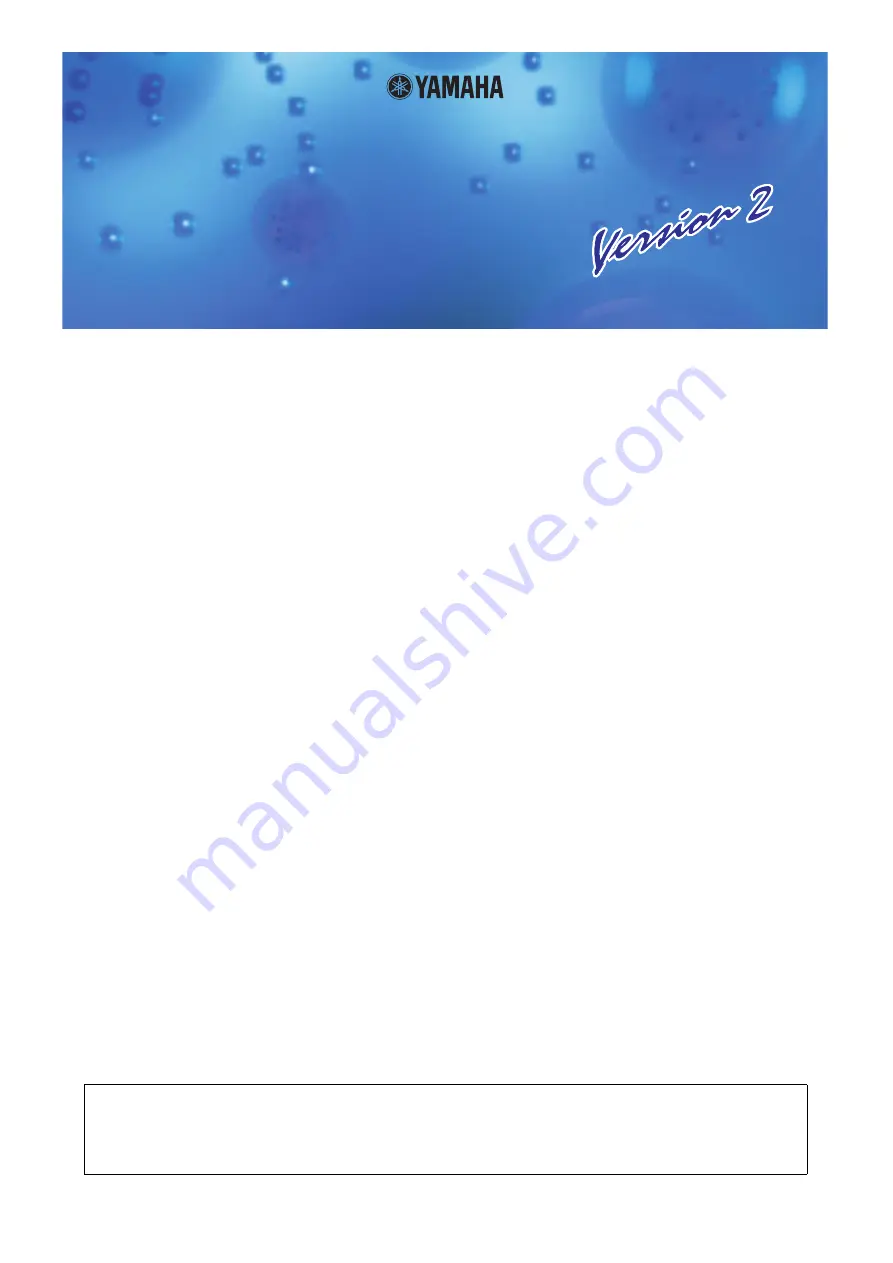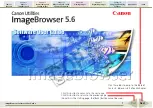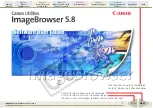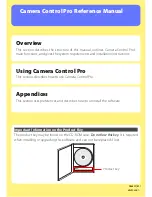
STUDIO MANAGER
STUDIO MANAGER
Owner’s Manual
Studio Manager Version 2 Owner’s Manual
1
Special Notices
• Studio Manager and this owner’s manual are exclusively copyright © by Yamaha Corporation.
• Duplication of the software or reproduction of this manual in whole or in part by any means is expressly forbid-
den without the written consent of the manufacturer.
• Duplication of the commercially available music sequence data and/or digital audio files is strictly prohibited,
except for your personal use.
• Yamaha makes no representations or warranties with regard to the use of the software and documentation and
cannot be held responsible for the results of using of this manual and software.
• This disc is a CD-ROM. Do not attempt to play the disc on an audio CD player. Doing so may result in irreparable
damage to your audio CD player.
• The screen displays as illustrated in this owner’s manual are for instructional purposes and may appear somewhat
different from the screens that appear on your computer.
• Future upgrades of application or system software and any changes to the specifications or functions will be
announced separately.
• All other trademarks are the property of their respective holders and are hereby acknowledged.
❏
Yamaha Pro Audio global site
http://www.yamahaproaudio.com/
❏
Yamaha synth.com
Table of Contents
Overview of Studio Manager . . . . . . . . . . . . . 2
Starting and Configuring Studio Manager . . 3
Quitting Studio Manager . . . . . . . . . . . . . . . . 5
Synchronizing with your hardware product . 5
Working with Files. . . . . . . . . . . . . . . . . . . . . . 6
Mapping MIDI Ports . . . . . . . . . . . . . . . . . . . . 6
Setting Preferences . . . . . . . . . . . . . . . . . . . . . 7
Menu Bar/Pop-up Menu . . . . . . . . . . . . . . . . . 7
Operation within Cubase . . . . . . . . . . . . . . . . 9
Supported editors . . . . . . . . . . . . . . . . . . . . . 10
* Specifications and descriptions in this owner’s manual are for information purposes only. Yamaha Corp. reserves
the right to change or modify products or specifications at any time without prior notice. Since specifications,
equipment or options may not be the same in every locale, please check with your Yamaha dealer.
Description of menus and buttons
In the event that menu and button names on a Windows system are different from those on a Macintosh,
this manual uses the Windows menu and button names followed by the Macintosh menu and button names
in parentheses.





























